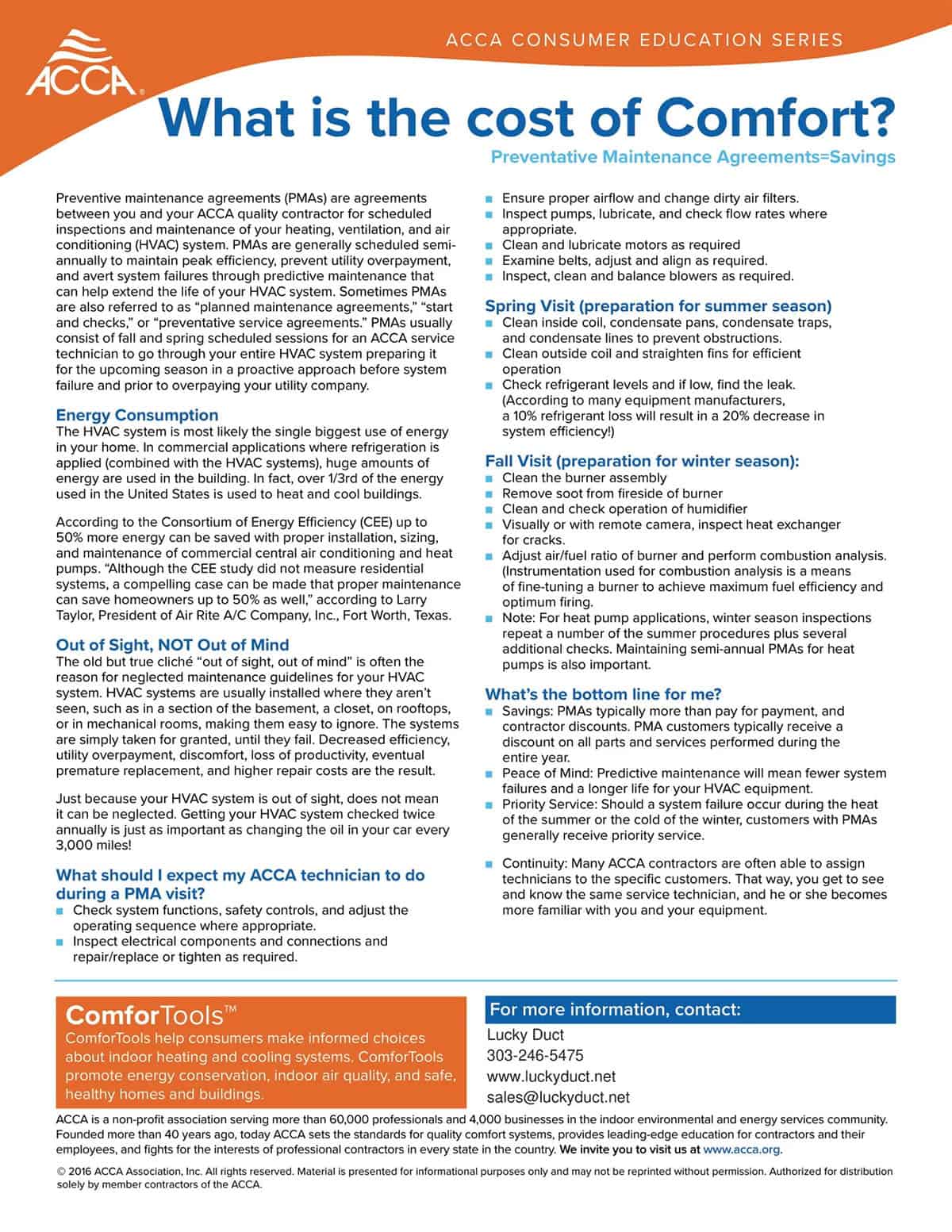Trusted Service Partner Links & Air Duct Facts
All Seasons Electric Inc. is a Colorado company serving the Denver Metro area. All Seasons Electric can handle all of your electrical needs from business to residential.CLICK HERE to visit All Seasons Electric.
Air Duct Tips & Facts
Duct Cleaning Recommendations found onhttp://www.cdc.gov/niosh/pdfs/appenb.pdfThe CDC does recognize that microbial growth can occur in evaporator coils and condensate drain pans. There always is a potential for these microbial contaminants to be delivered through the ventilation system considering the fact that an air handler blower moves air.
1. Any duct cleaning should be scheduled during periods when the building is unoccupied to prevent exposure to chemicals and loosened particles. (they did not state that this always occurs, they are speculating that there is always a potential for it to occur) The air handling unit should not be used during the cleaning or as an air movement device for the cleaning process. The National Air Duct Cleaning Association recommends that the system should be run to allow at least eight air changes in the occupied space when duct cleaning has been completed.
2. Negative air pressure that will draw pollutants to a vacuum collection system should be maintained at all times in the duct cleaning area to prevent migration of dust dirt, and contaminants into occupied areas. Where possible, use vacuum equipment or fans during cleaning and sanitizing to make sure that cleaning vapors are exhausted to the outside and do not enter the occupied space.
3. If it is determined that the ductwork should be cleaned, careful attention must be given to protecting the ductwork. When gaining access to sheet metal ducts for cleaning purposes, it is essential to seal the access hole properly in order to maintain the integrity of the HVAC system. Access doors are recommended if the system is to be cleaned periodically, and all access holes should be identified on the building’s mechanical plans. Particular attention is warranted when cutting fibrous glass ducts, and manufacturers’ recommended procedures for sealing should be followed stringently. Use existing duct system openings where possible because it is difficult to repair the damage caused by cutting new access entries into the ductwork. Large, high volume vacuum equipment should only be used with extreme care because high negative pressure together with limited airflow can collapse ducts.
4. Duct cleaning performed with high velocity airflow (i.e., greater than 6,000 cfm) should include gentle, well-controlled brushing of duct surfaces or other methods to dislodge dust and other particles. Duct cleaning that relies only on a high velocity airflow through the ducts is not likely to achieve satisfactory results because the flow rate at the duct surface remains too low to remove many particles.
5. Only HEPA filtered (high efficiency particle arrestor) vacuuming equipment should be used if the vacuum collection unit is inside the occupied space. Conventional vacuuming equipment may discharge extremely fine particulate matter back into the atmosphere, rather than collecting it. Duct cleaning equipment that draws the dust and dirt into a collection unit outside the building is also available. People should not be allowed to remain in the immediate vicinity of these collection units.
6. If biocides are to be used, then select only products registered by EPA for such use, use the products according to the manufacturer’s directions, and pay careful attention to the method of application. At present, EPA accepts claims and therefore registers antimicrobials for use only as sanitizers, not disinfectants or sterilizers in HVAC systems. (See Appendix F for definitions of antimicrobials.) There is some question about whether there are any application techniques that will deposit a sufficient amount of the biocide to kill bacteria, germs, or other biologicals that may be present. Materials such as deodorizers that temporarily eliminate odors caused by microorganisms provide only a fresh smell, and are not intended to provide real control of microbiological contaminants.
7. Use of sealants to cover interior ductwork surfaces is not recommended. No application techniques have been demonstrated to provide a complete or long-term barrier to microbiological growth, nor have such materials been evaluated for their potential health effects on occupants. In addition, using sealants alters the surface burning characteristics of the duct material and may void the fire safety rating of the ductwork.
8. Careful cleaning and sanitizing of any parts of coils and drip pans can reduce microbiological pollutants. Prior to using a sanitizer, deodorizer, or any cleansing agents, carefully read the directions on the product label. Once cleaned, these components should be thoroughly rinsed and dried to prevent exposure of building occupants to the cleaning chemicals.
9. Water-damaged or contaminated porous materials in the ductwork or other air handling system components should be removed and replaced. Even when such materials are thoroughly dried, there is no way to guarantee that all microbial growth has been eliminated.
10. After the duct system has been cleaned and restored to use,a preventive maintenance program will prevent the recurrence of problems. Such a program should include particular attention to the use and maintenance of adequate filters, control of moisture in the HVAC system, and periodic inspection and cleaning of HVAC system components. (See discussion of Preventive Maintenance on page 36 in Section 5.)
Lucky Duct has the ability to perform an air duct cleaning to meet or exceed the stated recommendations found on the www.cdc.gov/niosh/pdfs/appenb.pdf address. Lucky Duct in fact follows the ACCA “Restoring of HVAC system” guidelines, which has been formally accredited and recognized as the national standard by the American National Standards Institute (ANSI).

